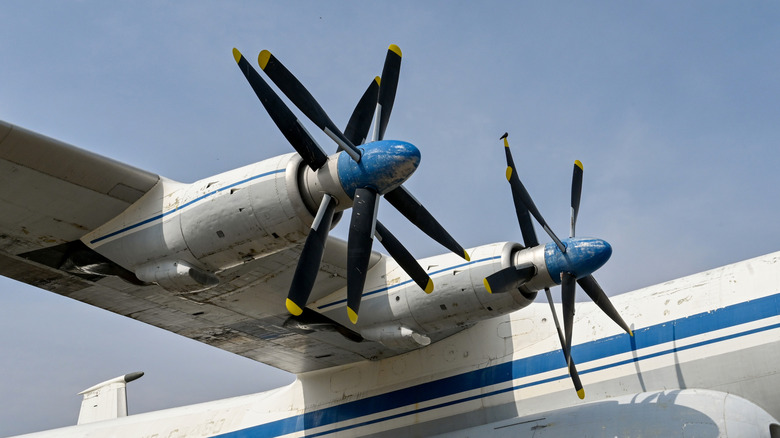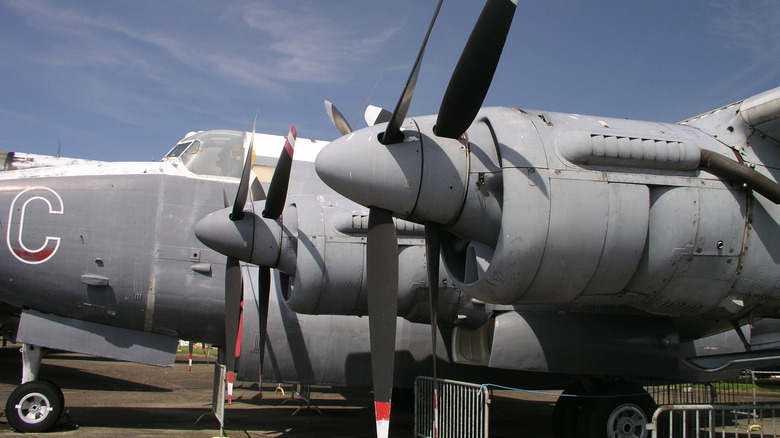The Genius Engineering Behind Contra-Rotating Propellers
At the very crux of engineering is the desire to problem-solve, optimize, and squeeze out every bit of efficiency possible from the system being built. Aircraft design and aeronautical engineering embody these very same principles, with aircraft having limited space and power while needing to be as efficient as possible. Historically, most planes traditionally relied upon a single propeller to generate thrust, but this all changed at the advent of a pivotal engineering solution in aviation history: contra-rotating propellers (CRPs). Unlike standard propellers, CRPs consist of two sets of blades on the same axis that spin in opposite directions.
Many propeller planes the U.S. military uses today operate with a single propeller. These planes work by pushing air backward to move the aircraft forward. At the same time, this creates some rotational airflow that doesn't propel the aircraft forward and can even destabilize it. When a second propeller is added to spin the opposite way, the plane can capitalize on that rotational airflow to improve efficiency. In addition to adding thrust, this also increases stability, ultimately adding an estimated 6% to 16% more power.
The genius here lies in solving two problems at once: stability and efficiency. CRPs can produce more thrust without the need for longer blades or more powerful engines, and they balance the destabilizing rotational force that single propeller engines suffer from. It's this balance that made them such a popular choice for military and large cargo planes.
CRPs were used on several legendary aircraft
Contra-rotating propellers never became widespread in commercial aviation, but militaries around the world adopted CRPs often for big, heavy aircraft after the technollogy was patented by English engineer Frederick W. Lanchester in 1907. It makes sense, then, that the British were the first to fit CRPs to aircraft like the Avro Shackleton patrol plane and the Fairey Gannet. This technology was also used in one of the strangest fighter jets ever flown in the United States: the Convair XFY "Pogo." Thanks to this clever engineering, the dual-propeller system enabled aircraft to generate ample thrust without needing to exceed safe propeller diameters.
Then, the Soviets entered the conversation and pushed the technology even further. In the 1950s, the Soviet Union paired a Kuznetsov NK-12 turboprop engine with CRPs to propel the legendary Tupolev Tu-95 "Bear" bomber. This plane can still produce more power than any other turboprop in 2025. Still, contra-rotating props were not devoid of faults. They were loud, complex, and heavy. The noise issue, in particular, is the reason they were never really used for passenger flights.
CRPs were adopted on many marine vessels as well
Although jet engines eventually overshadowed propeller-driven aircraft, contra-rotating propellers continue to be a fascinating case study in engineering efficiency. The technology trickled over into marine engineering, where CRPs were adapted for ships and submarines. In marine applications, CRPs can increase efficiency even more, with gains reaching up to 20%. They also have the benefit of lowering the amount of vibrations and vapor bubbles produced in water, which can in turn reduce the degradation of the propellers. Overall, the design allows propellers with smaller diameters to propel big tankers and cargo ships more efficiently. This can reduce the amount of fuel needed by about 12%, which also makes the whole operation cheaper to run.
While modern jet engines continue to get bigger and more advanced, contra-rotating propellers can still do a lot with their relatively small size. Whether they are used on bombers roaring across the skies or ships cruising across the ocean, CRPs have proven to be a genius piece of engineering that improved a system without needing to reinvent it entirely.


